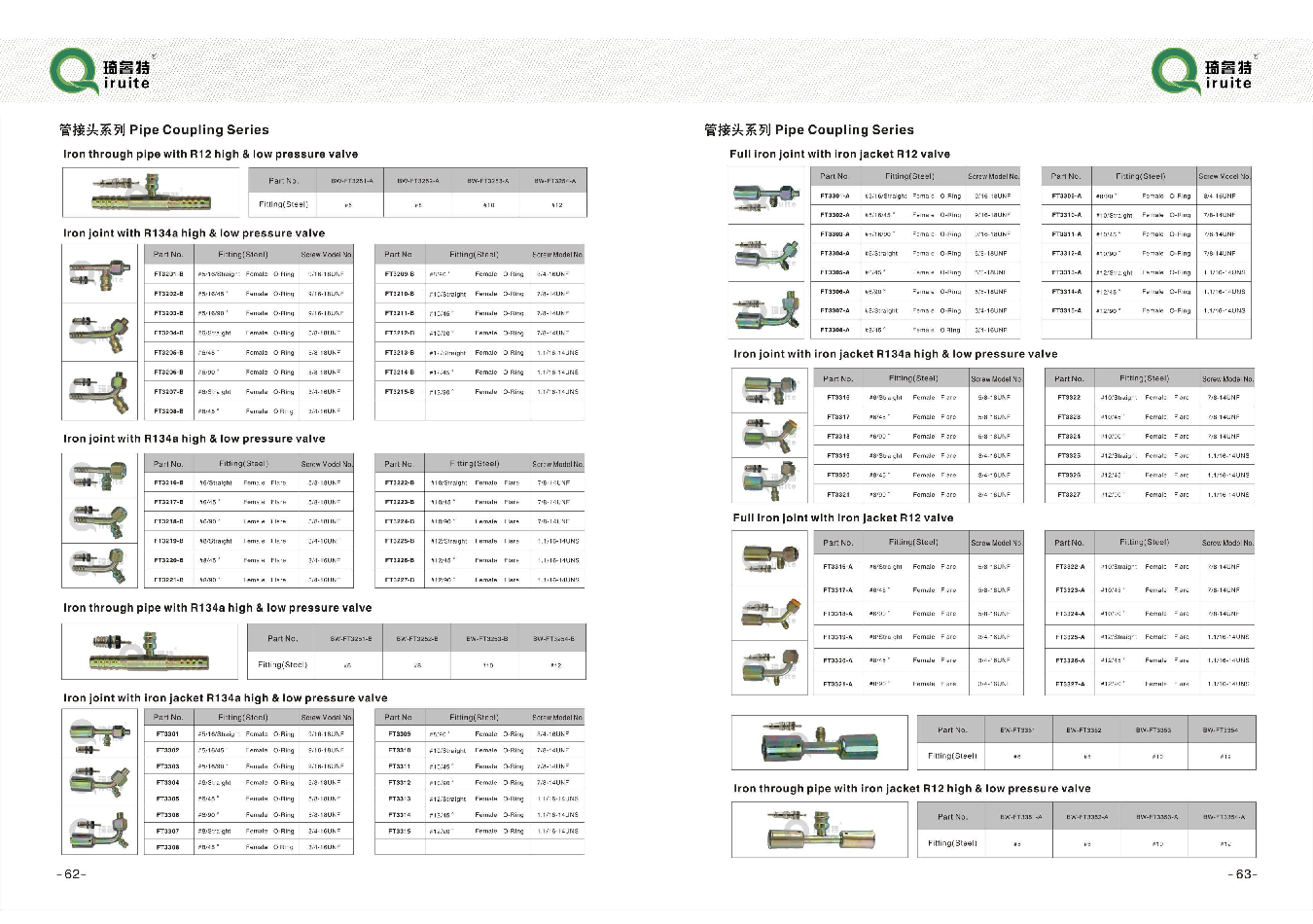Power Steering Hose Installation and Routing Guidelines for Optimal Performance
Power Steering Hose Routing A Comprehensive Guide
Power steering systems are essential in modern vehicles, enhancing maneuverability and reducing the physical effort required to steer. One of the critical components of these systems is the power steering hose, which carries hydraulic fluid from the pump to the steering gear. Proper routing of the power steering hose is crucial for optimal performance and longevity of the system. This article outlines the importance of correct power steering hose routing, common practices, and potential issues arising from improper installation.
Importance of Correct Routing
Correct routing of the power steering hose is vital for several reasons. First and foremost, it ensures efficient fluid flow throughout the system. The hydraulic fluid is responsible for amplifying the driver's input at the steering wheel, making it easier to turn the steering mechanism. If the hose is bent or kinked, it can obstruct fluid flow, leading to hard steering and increased wear on components.
Additionally, proper routing minimizes the risk of damage caused by friction. Hoses that are not routed correctly can rub against sharp edges or other components, leading to cuts or abrasions. Such damage can cause leaks, which compromise the power steering system's effectiveness. By adhering to manufacturer specifications for routing, drivers can help safeguard their vehicles against these potential issues.
Common Routing Practices
When routing power steering hoses, there are several best practices that should be adhered to
1. Follow Manufacturer Guidelines Always refer to the vehicle’s service manual for specific routing diagrams and instructions. Manufacturers design hoses to fit specific pathways to ensure optimal performance and reliability.
power steering hose routing

2. Avoid Sharp Bends and Kinks Hoses should be installed with gentle curves, avoiding sharp bends that can restrict fluid flow. If a bend is necessary, ensure it has a gradual radius.
3. Secure Properly Use clamps and brackets to secure hoses, preventing movement that could lead to wear. Hoses should be fastened firmly but not so tightly that they become pinched.
4. Keep Away from Heat Sources Ensure hoses are routed away from heat sources such as the exhaust manifold or engine components. Excessive heat can degrade the material of the hose, leading to premature failure.
5. Regular Inspection Periodically check the power steering hoses for signs of wear, cracks, or leaks. Catching problems early can prevent more severe damage and costly repairs.
Potential Issues from Improper Routing
Improper routing of power steering hoses can lead to several issues. A common problem is increased resistance in the system, leading to decreased steering performance. Additionally, if hoses rub against other components, it can cause friction points that can wear through the rubber, resulting in leaks. In severe cases, this may lead to complete power steering failure, posing a safety risk while driving.
In conclusion, understanding and implementing proper power steering hose routing is crucial in maintaining vehicle performance and safety. By following best practices and manufacturer guidelines, vehicle owners can ensure their steering systems operate smoothly and reliably, contributing to an overall better driving experience. Regular inspections and maintenance are equally important for early detection of potential issues, ensuring that drivers can navigate confidently and safely.
-
Ultimate Spiral Protection for Hoses & CablesNewsJun.26,2025
-
The Ultimate Quick-Connect Solutions for Every NeedNewsJun.26,2025
-
SAE J1401 Brake Hose: Reliable Choice for Safe BrakingNewsJun.26,2025
-
Reliable J2064 A/C Hoses for Real-World Cooling NeedsNewsJun.26,2025
-
Heavy-Duty Sewer Jetting Hoses Built to LastNewsJun.26,2025
-
Fix Power Steering Tube Leaks Fast – Durable & Affordable SolutionNewsJun.26,2025

